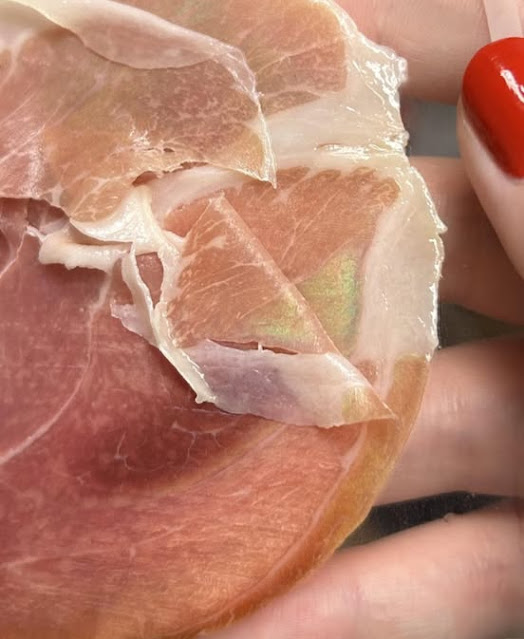
You’ve just prepared a slice of ham and noticed a strange rainbow-like sheen on the surface. Is it safe to eat? Should you toss it out? Here’s the science behind this iridescent effect and what it means for your food.
Why Does Ham Have a Rainbow Sheen?
The rainbow-like appearance on ham is a result of light diffraction. This occurs when light waves interact with the meat’s natural muscle fibers, particularly the proteins.
Muscle Structure: Ham, like other meats, contains a specific arrangement of muscle fibers and proteins. When these are sliced thinly or cooked, the structure can refract light in a way that produces a prism effect, creating the rainbow colors.
Cured Meats: The curing process (involving salt, nitrates, or nitrites) can enhance this effect by preserving the meat’s natural structure and reflecting light more intensely.
Is It Safe to Eat?
Yes! The rainbow sheen on ham is completely safe and doesn’t indicate spoilage or contamination. It’s a natural phenomenon related to the meat’s composition and preparation.
However, always ensure your ham is fresh by checking:
Expiration Dates: Confirm the “use-by” or “sell-by” date.
Smell: A sour or unpleasant odor is a sign of spoilage.
Texture: Sticky or slimy ham should not be consumed.
Common Misconceptions
Not Chemical Additives: The rainbow sheen is not caused by chemicals or artificial additives.
Not a Sign of Spoilage: Unless accompanied by an off smell, texture, or mold, it’s safe to eat.
How to Minimize the Rainbow Sheen
If the appearance bothers you, there are a few ways to reduce the likelihood of it:
- Cut Thickness: Slice the ham thicker, as thinner slices are more prone to the light diffraction effect.
- Storage: Keep ham tightly wrapped to prevent oxidation, which can enhance the sheen.
- Cooking: Cooked ham tends to show less iridescence compared to raw or lightly processed ham.
The Science Is Beautiful
The rainbow sheen on ham is a fascinating example of how light interacts with natural structures. It’s a harmless phenomenon that doesn’t affect the flavor or quality of your food. So, next time you see a shimmering slice of ham, you can confidently enjoy it—now with a little extra knowledge!